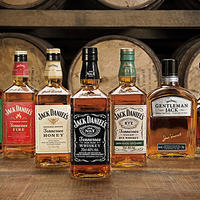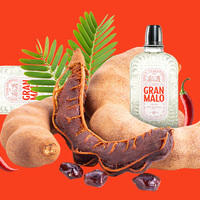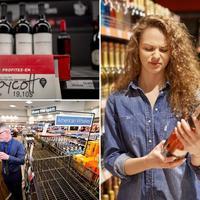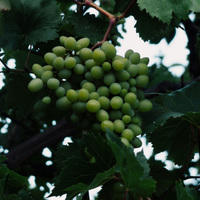Nova Scotia Plans On Selling $14M U.S. Liquor Stockpile From Tariff Boycott
Image Source: Jack Daniel's
After the Trump administration put a 25% tariff on Canadian products back in March, the country responded with a mass boycott of U.S. alcohol. Canadians stopped buying beer and liquor from the states, and in Nova Scotia, U.S. spirits were removed from shelves all together. Now, the province is sitting on a $14 million stockpile of alcohol, which they have begun selling again this December. The province plans on donating profits to Feed Nova Scotia, a charity focused on food insecurity in the region.

Amid Shortages, Matcha Counterfeits Proliferate—Here's How To Tell The Difference
Image Source: Alice Pasqual
As demand for matcha steadily increases and climate change reduces crop supplies, matcha producers are struggling to keep up. Family-run farms in Japan supply the most authentic matcha in the world, with the highest quality product coming out of regions with ideal growing climates like Nishio, Uji and Kagoshima. These farms are running low on supplies, and rather than waiting for the good stuff to come back around, western brands have been counterfeiting the product with low-grade powders and additives. It's harming the reputations of multiple top-shelf matcha brands and turning away potential fans of the beverage who have been duped by cheap knockoffs. Luckily, spotting the difference between high and low quality matcha is possible. As this article shows, it all comes down to taste, smell, and color.

Spicy Tamarind Liqueur Captures U.S. Imagination
Illustration Source: Danielle Grinberg / VinePair
Gran Malo, a new tequila-based, tamarind-flavored liqueur launched in Arizona, Colorado, Florida, Illinois, Nevada, New Mexico, and Texas this year after initial success in Southern California last year. The 30% ABV liqueur mimics traditional tamarind-flavored Mexican candies and was released in partnership with Casa Lumbre, the same company responsible for Ancho Reyes and Montelobos Mezcal. Gran Malo and E&J Gallo have partnered to bring the liqueur nationwide, focusing on the Mexican American and Hispanic demographics of the U.S.

Tariff Boycott Results in Nearly $70 Million Shortfall of U.S. Booze Exports To Canada
Image Source: GettyImages / NY Post
In March, the Trump administration rolled out 25% import tariffs on Canada, and Canadian consumers immediately fought back. Boycotts of U.S. alcohol companies have proven effective, as liquor and wine exports to Canada dropped more than 60% in the first six months of 2025, a nearly $70 million loss. The shortfall hits smaller U.S. brewers, distillers, and winemakers hardest. Baltimore-based Sagamore Spirit missed out on 10% of its previous exports to Canada, totaling a $2 million loss in sales. “We’re a small craft distillery, so a couple of million dollars is pretty significant,” said Sagamore Spirits CEO Robert Cullins.

More Beverage News
Lebanese Winemakers Suffer Amid Middle East War And Drought
Restaurants Lean Into Mocktails As Demand For Alcohol Declines
Starbucks Tests Coconut Water And Protein Foam Beverages
Perrier And Other Water Brands Face Scrutiny After Filtering Products Advertised As Natural Water
Winemakers And Viniculturists Switch To Piwi Grapes Amid Climate Change
Image Source: Summer Rune / Unsplash
Winemakers switch up grape varieties nearly every year in response to a fluctuating climate conditions. Certain grape varieties react to weather changes more favorably than others, an advantage for winemakers hoping to minimize crop damage during harsh seasons. Piwi grapes, a hybrid variety, have recently become popular among viniculturists for their fungus-resistant and weather-proof properties. In European countries, centuries-old traditions and vineyard laws have prevented winemakers from accepting these hybrid Piwi varieties. “Ultimately, it’s not a debate of Vitis vinifera versus Piwi, it’s a question of what is most sustainable for the environment and will allow for viticulture in the centuries to come,” says Julianny Gómez, beverage manager at Forsythia in NYC.

The World's 40 Largest Beer Companies In 2025
Image Source: JCM / Adobe Stock
Despite tariff wars, consumption decline, and a flurry of other issues, the beer industry continued to thrive throughout 2025. BarthHaas, a German hops company, released their industry report for 2025 early this June showcasing the world's top beer companies and largest exporters. AB InBev and Heineken, which secured the number one and two spots respectively, brewed a combined total of 736.19 million hectoliters of beer. All together, the 40 largest beer companies in the world brewed a combined total of 1,638.82 million hectoliters of beer for the year, a small decrease from least year's 1,648.71 million hectoliters.
